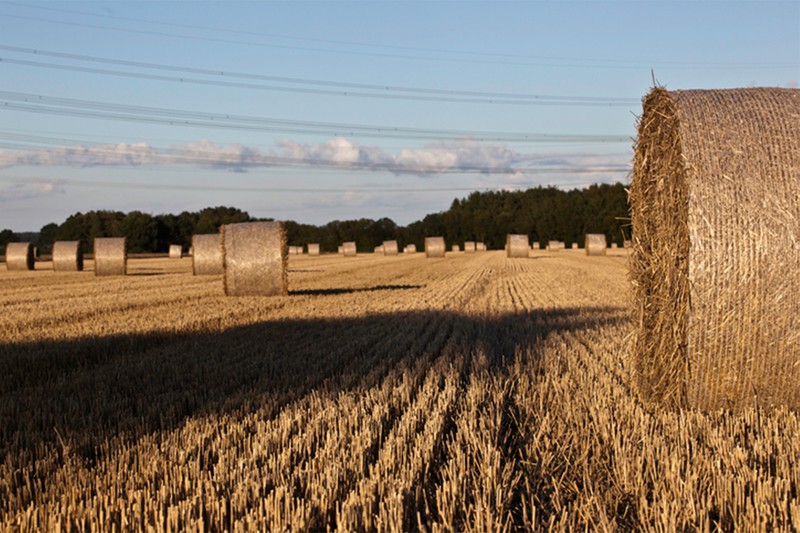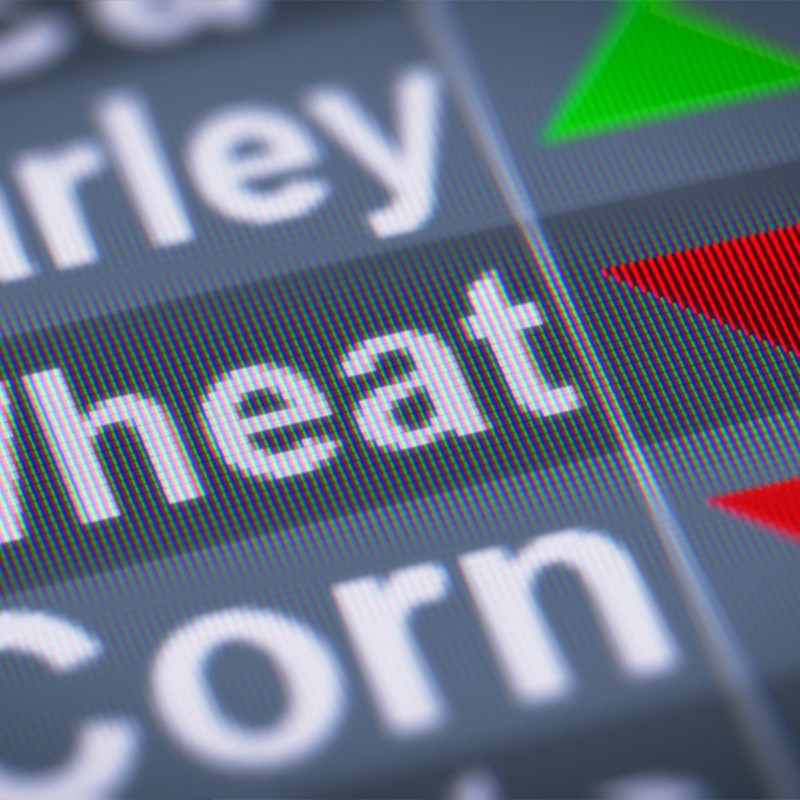My Interesting Job: Grain Trader

I’m a farmer’s son but I never wanted to be a farmer. My mind goes to some strange places when I spend time on a tractor. I remember working on a 100-acre field once. By the end of it, I was a basket case I was so bored. I did a post-grad degree that was supposed to set me up as a land agent, but so much laborious paperwork meant I quickly realised that wasn’t for me either. I’d always enjoyed the business side of farming, looking at financial markets and commodity prices, so I tailored my dissertation towards price risk management. Three years later, I got a trading job and that’s what I’ve been doing for 12 years now.
If I didn’t like the countryside so much, I probably would have gone into the City. But I can do this job from my home in the Cotswolds, with my dog in the office, and that’s the life I want for my family. I like London for a party but coming back here on a Sunday night always feels pretty good.
I deal with a lot of farmers and they tend to be pretty sceptical of traders. They can be quite tricky characters – probably too much time spent alone on tractors. Often they think we’re trying to do them out of money. ‘You want my grain for your own gain’ is a common train of thought. We’re actually helping them with their price risk management. My farming background has been useful in getting them onside. If you can do that, the information they hold and the experience they have can give you an edge. They know more about the upcoming harvest than anyone else.
Despite what some farmers think, the role of grain trader is a useful one. We facilitate the movement of grain all around Europe. I work for Bartholomews, which has a head office on the south coast. We also have a fleet of 70 lorries because we’re not only taking positions on the market and trading futures. We’re buying and selling grain, which comes with big logistical implications. We pick the grain up from lots and lots of different farmers in 29-tonne loads and we have to get it to consumers. Consumers can place orders as big as 10,000 tonnes, but it’s not always an immediate sale, so the grain can be on our books for a while. Trading futures allow us to manage our exposure to risk. For example, if the market goes up and we are buying grain, but the consumer is not present, we might decide to sell futures in case the market were to fall.
Having a feel for the market is crucial to being a good grain trader. That comes with experience. Twelve years on, I’ve got a much better understanding of the market, even though it’s increasingly uncertain and volatile due to so many variables in the world right now. I can look at charts such as the relative strength index and know that the market is currently oversold or overbought.
Perhaps the most important thing is being able to admit you’re wrong. If you’re in the wrong position, you need to admit that, change your mind quickly and take action. It’s very easy when you’ve got the market wrong to just sit there and watch it go even more wrong for you, so you end up having bought everything at the top and eventually selling everything at the bottom.
You also need to have good relationships with people. You need to be talking to everyone you come into contact with, whether they’re at the bottom of a company or the top. They will all have an opinion and sometimes the on-the-ground intelligence is best. Farmers always know about any particular pests that are around or slight weather changes, and how those things might affect their yields.
In any year it’s not certain whether the UK will be a net exporter or importer of grain. A price difference of £20 a tonne switches the country from one to the other. A couple of years ago, it didn’t really stop raining between about September and April. We had one of the smallest wheat crops for 40 years because it was too wet for farmers to plant their winter wheat. Domestic prices were very high as a result, so we were having to bring in lots of German milling wheat.
Looking into the future is a big part of the job. You’re keeping an eye on the weather forecast in big growing regions from Canada and the American Midwest to Russia, while also having to think about political tensions, for example. The Russians being stuck on the Ukraine border – those are two key grain exporting nations, so we’ve spent a lot of time wondering what that’s going to turn into and what it might mean for the price of wheat. Currency is the other big variable in grain trading – we principally trade exports into Europe, so the relationship between the pound and the euro is the key one for us.

When Brexit loomed, we basically had to stop trading. It was a much bigger event in this sector than the pandemic. As of 31st December last year, we had no idea whether we’d be facing new tariffs on grain exports. At that point, we’d normally have been sending a lot of barley to Antwerp for malting. But we didn’t know if there’d be a free trade agreement with the EU or if there’d be World Trade Organisation tariffs, and we just don’t have the margins to support that sort of extra cost. The whole process of Brexit also changed currency markets. The pound went from €1.25 to €1.07, which is equivalent to about £20 a tonne on the price of wheat. We like a nice weak pound – it makes our exports more attractive to foreign buyers while imports become more expensive – but that was up in the air too, so we completely stopped trading our positions for a bit.
I’m not sure if I will always be a grain trader. There can be some very quiet days when you’re trading physical grain. Often there can simply be no reason for anyone to be doing any business on a given day. That said if I did leave grain trading behind, I’d miss the busier days and the financial side of it, the risk and the satisfaction of getting something right.
Working days usually start at 8:30. I catch up on emails, then I read a lot of stuff about the market, trying to understand what happened to it the previous day and why, and also looking ahead – weather forecasts are important, so are US Department of Agriculture figures, especially global supply and demand estimates. There’s also the macro stuff: we don’t do big vessels to America or Asia so for us it’s mostly about whether the pound is going to get stronger against the euro. Then the market opens at 9:30. We’re a team of four traders and we have a weekly call to establish our plan, then we’re in touch throughout the week.
This time of year can be quiet. But the past few weeks have been busy because the market has been explosive as a result of global weather stories affecting next year’s crop. The market went up £10 at the beginning of one week and back down £10 by the end of it.
Sometimes in spring we get out on the road. The maltsters who buy our malting barley fly over from Europe to assess the UK crop. As well as hitting the fields, they tend to like to go and have a few beers too, and these trips are as much about entertaining them as they are about looking at the crops.
Autumn is spent piecing together cargos. We’re all looking at spreadsheets to see what we’ve got in terms of quantity and quality, and what can be blended together. We get samples from the farms at harvest, showing the quality of their grain. Then it’s about mixing and matching the good stuff and the marginal stuff, and trying to fit together a spec so that we’re delivering near enough bang on what we have sold. The export terminal we’ve got in Shoreham makes doing all this and keeping track of it a bit easier.
Our customers are a varied bunch. We sell barley into Ireland in big volumes for the pig units over there. Maltsters in Europe take our malting barley. We tend to have trade agreements with them, so we can ensure supply for them for months ahead, then the price is set daily by brokers – because of currency changes, there can be some pretty big movements. Domestically, Hovis is a big customer, but we also have the guy down the road who buys his cattle feed from us in small loads.
The market is more volatile than it used to be. Unprecedented things are happening in the world and no one really knows what they mean. When Covid hit, for examples, grain markets came down quite dramatically because restaurants shut and there was a lot less wastage. You might’ve thought people stock piling and home baking would’ve sent demand up. We’re also seeing the fallout from the African swine fever epidemic that forced China to slaughter 350m pigs a couple of years. Now they’re trying to rebuild that herd at pace and they’re buying commodities from around the world at an unprecedented rate. That means demand is really high, while on the supply side there are always particular weather issues that can hamper production and create a really tight global supply-and-demand situation. Everyone’s getting twitchy about not having enough to go around. On top of that, you have events that happen out of nowhere, like a fund deciding to sell off a position in commodities because it wants to move into equities. The involvement of funds in the market can make any movements more explosive, especially if they are reacting quickly to events with a short-term perspective.
The supply-and-demand situation is only going to get tighter. At some point the world’s going to have to reconsider how it grows its food and what it eats, because there won’t be enough to go around. There’s no simple solution. Here in the UK, for example, we’ve left the EU, which was subsidising our farmers. Those subsidies look likely to be replaced by inducements around more environmental issues. For example, it might become more lucrative for farmers to start farming less intensively or even rewilding land. If that leads to a reduction in the supply of wheat, the price of wheat will start to go up and, at some point, it will become more lucrative to go back to wheat production again, and you might be back where you started.
George Phillips is a grain trader for Bartholomews.
DISCLAIMER: We endeavour to always credit the correct original source of every image we use. If you think a credit may be incorrect, please contact us at [email protected].


